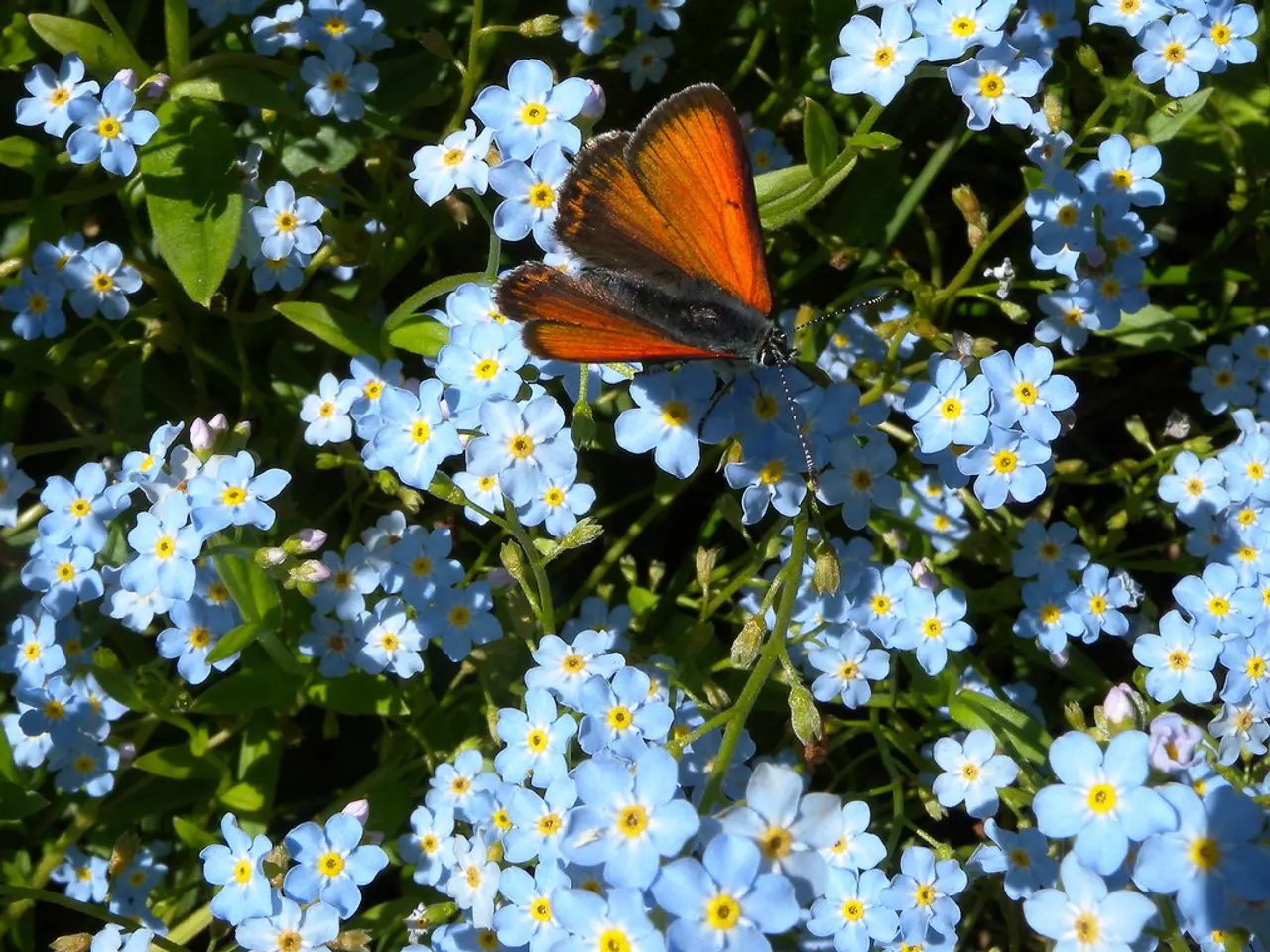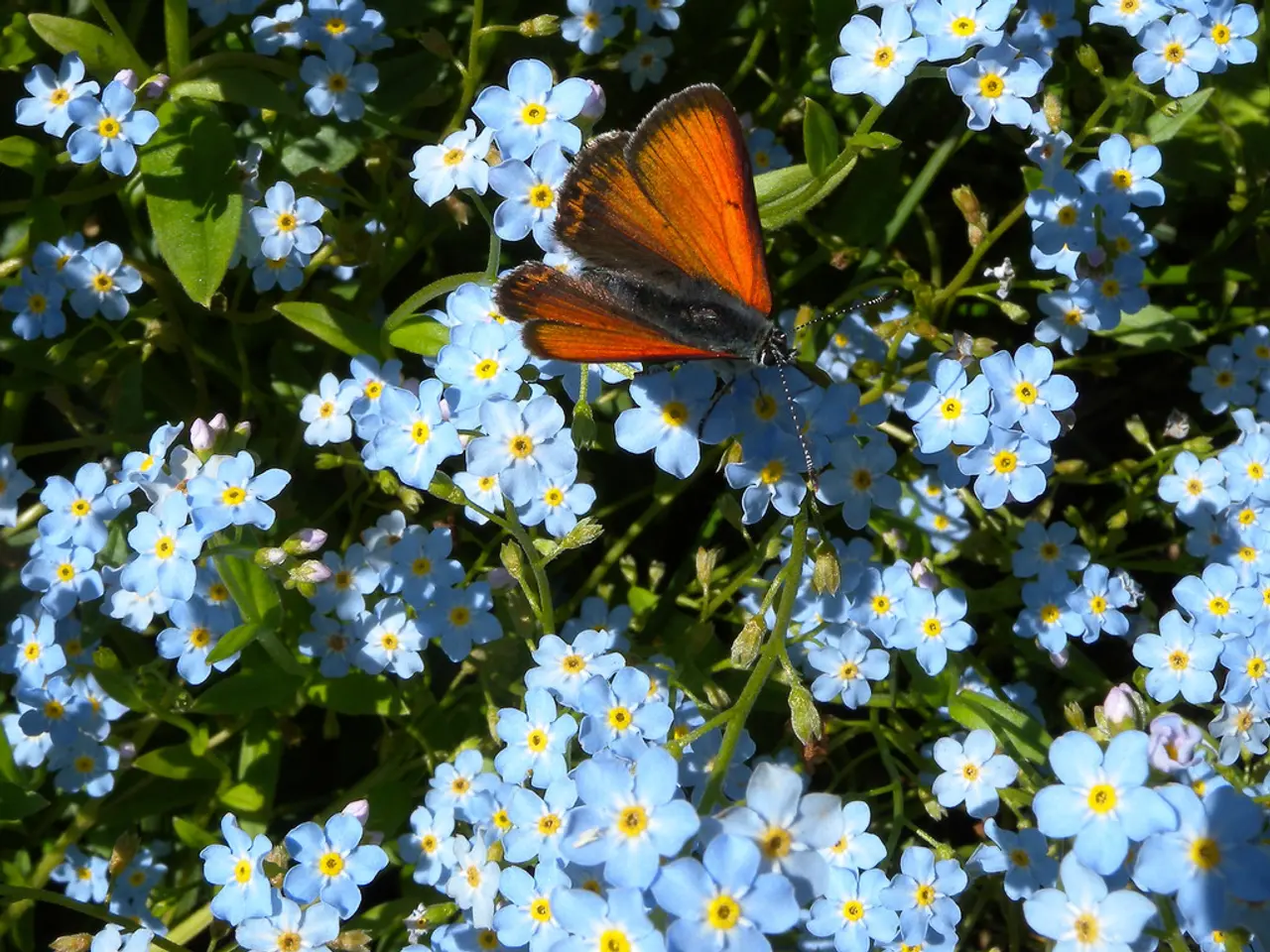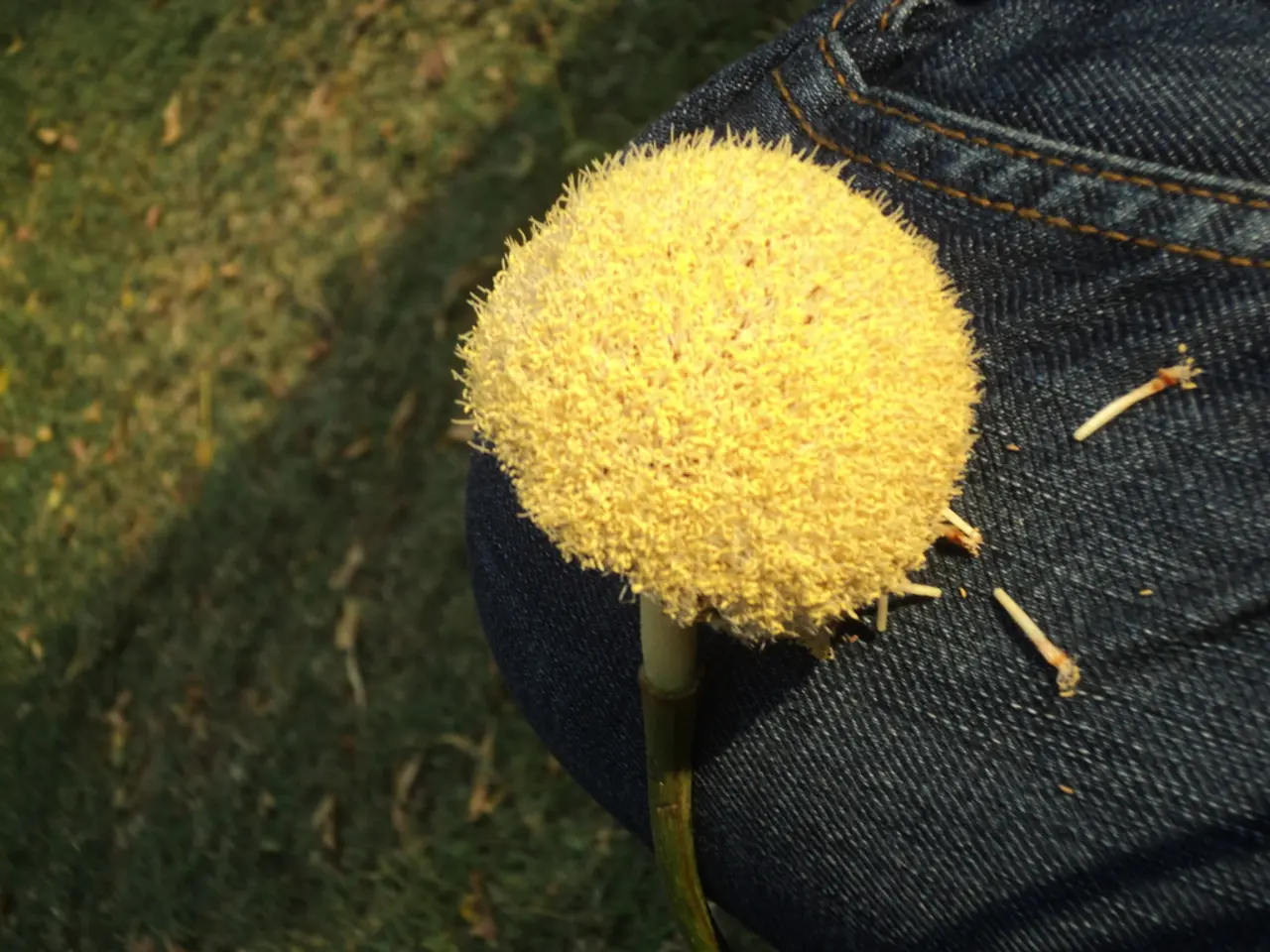Are English bluebells charming, or could they be invasive? Get acquainted with their distinguishing characteristics.
Springtime Transformation: English Bluebells' Vibrant Takeover
Step into a breathtaking spectacle as our woodlands bloom with vivid carpets of English bluebells, their deep violet-blue petals spread across the forest floor, emitting a faint, honey-scented breeze on a warm, spring day. Over half the world's population of these iconic wildflowers resides in the UK.
With their enchanting charm, it's no wonder visitors flock to marvel at these wild beauties. A must-see destination is Westonbirt, The National Arboretum, where Silk Wood transforms into a mesmerizing sea of blue during late spring.
Deciphering Bluebells: English vs. Spanish
The native English bluebell (Hyacinthoides non-scripta) can be distinguished by its slender, drooping stems, with the flowers bunched on one side. Its flowers boast a deep violet-blue hue, curled petals, and white pollen, while giving off a delightful scent. Historically, its sticky sap was utilized to stiffen Elizabethan ruffs, bind books, and even set fires in arrows. Stumbling upon bluebells in the wild may even indicate a precious ancient woodland.
English bluebells are protected under the Wildlife and Countryside Act 1981, making it illegal to dig them up.
In contrast, the larger Spanish bluebell (Hyacinthoides hispanica) shares similar charm but poses problems due to its invasive nature and ability to hybridize with the native English bluebell, which can disrupt the delicate balance of the ecosystem. Spanish bluebells are more vigorous, with broad leaves, paler blue flowers, and less fragrant blooms, compared to their English counterparts.
It is advisable to avoid growing Spanish bluebells in your rural garden to protect the delicate English bluebell population.
Cultivating Your Own Bluebell Haven
Do you long to create your very own bluebell woodland? Planting bluebells in your garden is hassle-free! Instead of waiting years for seeds to grow, opt for bulbs, which establish more quickly. You can purchase bulbs during active growth or at other times of the year.
To ensure a thriving bluebell garden:
- Obtain the bulbs: Check with your garden center or supplier that the bulbs are cultivated, not wild collected, and sourced and grown in the UK to reduce the risk of pest or diseases.
- Location, location, location: Plant bluebells in partial shade, under deciduous trees or shrubs, in moist but well-drained soil.
- Flourishing Season: Expect to witness the blooms in late-April to mid-May.
Protecting England's Treasure: Save the Native Bluebell
The English bluebell is an essential part of our countryside's beauty and biodiversity. By taking simple precautions such as avoiding planting Spanish bluebells in rural gardens, we can help preserve the future of England's cherished wildflowers and maintain the delicate balance of ecosystems. Savor the wonder of these treasured blooms and take a moment to appreciate the captivating beauty that Mother Nature offers.
[1] Enrichment Insight: Native English bluebells are renowned for their delicate drooping, fragrant flowers and play a vital role in the wildflower meadows of rural British woodlands.[3] Enrichment Insight: English bluebells form dense clumps in natural settings, creating a mesmerizing sea of blue throughout the woodland.[4] Enrichment Insight: To avoid confusion, it's essential to separate Spanish bluebells from English bluebells when planting them in your garden, as their hybridization can create hybrids (Hyacinthoides × massartiana) with uncertain outcomes.[5] Enrichment Insight: Spanish bluebells' invasive and aggressive growth habits can affect the local ecosystem by displacing native species and altering the traditional cottage garden aesthetic of rural areas.
- In order to cultivate a captivating garden and contribute to the preservation of native English bluebells, consider purchasing and planting UK-sourced bulbs during their active growth.
- By choosing to plant bluebells under deciduous trees or shrubs in partial shade and moist, well-drained soil, you can create a charming piece of landscape reminiscent of the wide wildflowers meadows found in English woodlands.
- To maintain England's lovely countryside and support the future growth of native bluebells, avoid introducing Spanish bluebells into your home-and-garden or rural area, as they can hybridize with the English bluebell, disrupting the ecosystem's delicately balanced gardens and landscape.




